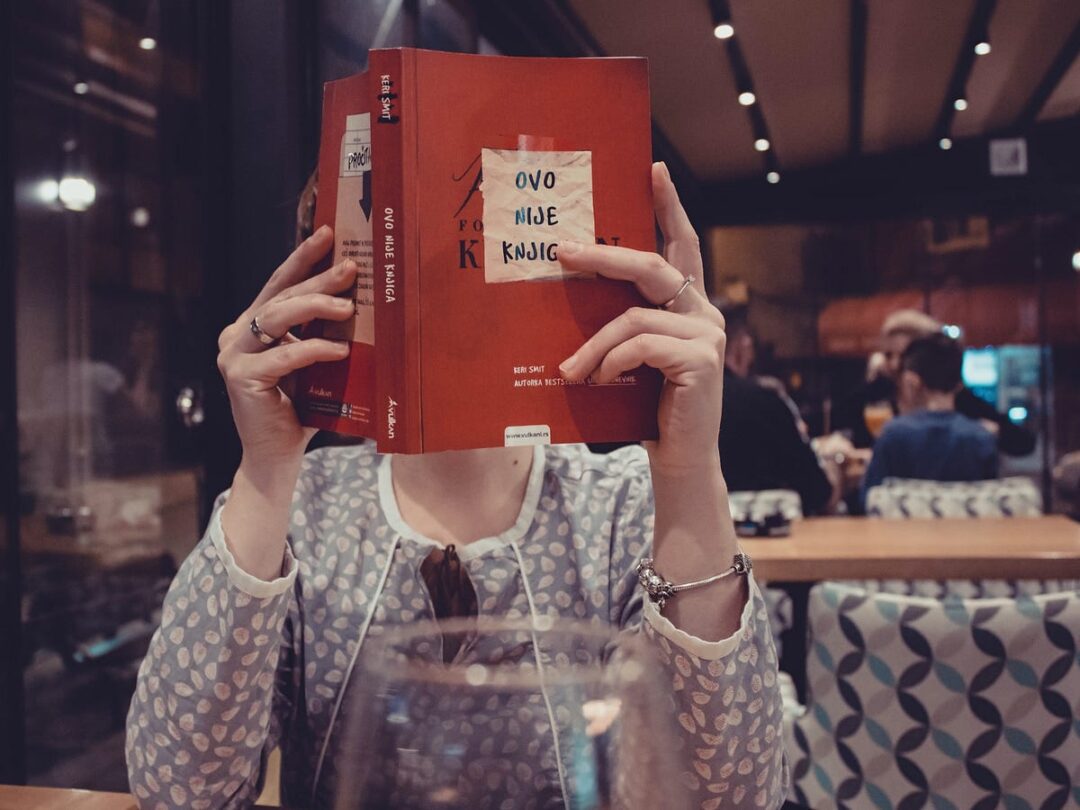This article is based on a book by Charles Duhigg called The Power of Habit.
Habits are the activities that we often do on a daily basis. For instance, waking up at 6 am, going for a run, having breakfast, leaving for work at 9:00 am, so on and so forth.
Habits determine what we will become. Suppose you have a habit of eating a cookie every day. In the long run, this daily habit will affect your health – it will cause you to gain weight.
Our daily habits occur unconsciously. For instance, you wake up and brush your teeth every day. You don’t have to remind yourself to do it. It is the first thing you do because it is your habit.
The Habit Loop
The Habit Loop consists of three steps – cue, routine, and reward.
Cue
Cues are the triggers that signal our brains to do something. It reminds us, either consciously or subconsciously, that we have to take some action now. A simple example would be the alarm clock going off every day at 6:00 am. When the alarm tone is played, it signals you that now it is time to wake up. Cues can be in different forms like seeing someone, a sequence of thoughts, a certain feeling, a text, and so forth. A cue will signal the brain to go into automatic mode.
Routine
Routine is the action or a sequence of actions that are taken after a signal has been triggered. It can be physical, mental, or emotional. Usually, the routine is the habit itself. After the alarm clock goes off, you wake up, get out of bed, brush your teeth, and wash your face. This is the daily routine.
Reward
The final part of the habit loop is reward. Rewards are the results or the outcomes of the habit. When rewards are satisfactory, your brain will remember it so that once the cue is triggered, you will start the routine to get the reward. After you brush your teeth and wash your face, you feel fresh and energized, which is the reward in this case.
Here are a few more examples of the habit loop.

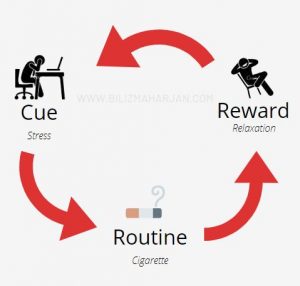
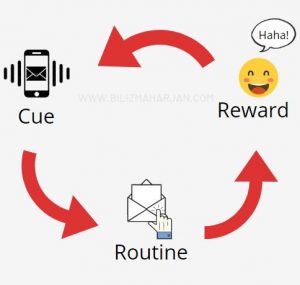
All Habits are Different
Habits are different, so they cannot be changed with a common procedure. Before I share with you how you can change a habit, understand that you might need to experiment with a few procedures. But, the one I will be sharing is only an initial step towards changing a habit. There can be a lot of other ways to change your habit.
Habits differ from person to person. Even the same habit might require different techniques for different people. Factors like will-power, behavior, mental strength, and physical strength differ from person to person and these factors will definitely affect their way of dealing with habits.
Some habits can be changed and influenced easily while others can be more complex to diagnose. The framework for changing any habit is only a place to start. It might require further in-depth analysis depending upon the habit that you want to change.
How to Change Any Habit?
It is very important to understand the habit loop in order for you to be able to change a habit. You need to identify the habit loop of the particular habit that you want to change.
For example, suppose you want to quit smoking. Identify the cue, routine, and reward of your smoking habit first.
- Cue – Stress
- Routine – You pull out a cigarette and smoke it.
- Reward – You feel relaxed after smoking the cigarette.
So how do you change this habit? After you have identified the habit loop, simply change the routine once the cue is triggered. For instance, if you feel stressed (which is the cue), get outdoors in nature for a few minutes (which will be the new routine). This might make you feel relaxed (which is the reward that you were seeking).
Remember this: To change a habit, change the routine that provides the same reward. The cue and the reward are kept the same while the routine is changed. This is the way to change any habit, or at least, a way to start the change.
There are four steps involved in this process:
- Identify the routine
- Experiment with rewards
- Isolate the cue
- Have a plan
1. Identify the routine
As I said, it is important to identify the habit loop (cue, routine, and reward) in order to change the habit. The routine is the habit itself, which is the behavior you want to change. So firstly, identify what the routine is.
Let’s consider the example of the smoking habit again. Here, the routine is – you pulling out a cigarette and smoking it.
Consider asking this: What caused you to do this? What is the cue for you to start this routine? Is it stress? Boredom? Wanting-to-look-cool? Influence of others?
And, how did you feel afterward? Relieved? Cool? Satisfied? Stress-free? Happy?
The next step is to experiment with rewards.
2. Experiment with Rewards
You need to experiment with the rewards so that you are able to identify exactly which cravings are driving particular habits. You can take a few days or weeks for this experiment.
Back to the smoking example, instead of pulling out a cigarette immediately, go outside for a walk. What is the reward if you do so? Try doing different things. When you feel stressed, try meditating for 5 minutes. You can try listening to music, talking to a friend, playing a musical instrument, making art, journaling, so on and so forth. It doesn’t matter what exactly you do. You just have to do different things.
To go even deeper, you can write down the rewards from each experiment of yours. Doing this, you will be able to identify exactly which craving is driving the routine.
3. Isolate the Cue
Next, identify the cue. What causes the habit in the first place? There are five categories of habitual cues:
- Location
- Time
- Emotional State
- Other people
- Immediately proceeding action
Which one of these is the cue that leads to your habit? In the smoking example – Is it the location? A specific cafe, restaurant, workplace? The influence of other people? Your friends smoke, so you smoke too. Emotional state – stress?
If you are having a hard time identifying the cue, notice the above situations when the urge hits. It’s even better to write them down – the location, the time, your emotional state, other people’s influence (if other people are around), and the immediate action that preceded the urge.
After completing the above three steps, your habit loop will be clear to you. You can now begin to shift your behavior, which leads us to the final step.
4. Have a Plan
The plan should be pretty simple to you once you have completed the three steps. The only thing you need to do is to change the routine once the cue has been triggered to get the reward that you have identified from Step 2. You have to change the habit loop now.
Back again to the smoking habit – After analyzing the habit as mentioned in the three steps, you identify the habit loop as follows.
- Cue – Emotional state. You are stressed.
- Routine – You pull out a cigarette(s) and smoke.
- Reward – Stress-free
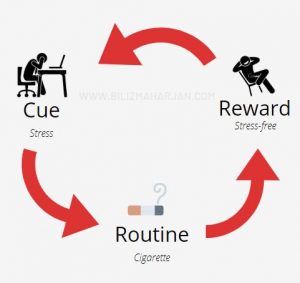
You need to set up a plan to break the loop like this:
- Cue -Emotional state. You are stressed.
- New Routine – Go outdoors and take a walk for a few minutes.
- Reward – Stress-free.
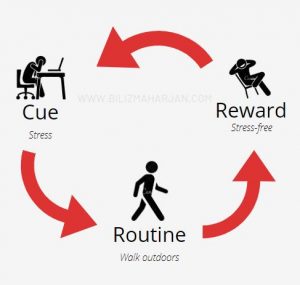
I’ve said it before that all habits are different. Different habits require different techniques to change. Changing a habit might not be as simple as explained in the above steps but these steps provide a good place to start. So try them out. See if they work. I’ve personally changed a few of my habits using this simple four-step method. For me, these steps worked well.
Creating New Habits
Using the same habit-loop method, you can also create new habits. I’d like to provide my own example here. I wanted to start going for a run every morning. When I wanted to start this habit, it was winter and the mornings were cold. Running in cold winter mornings is not an easy habit to start.
I created a habit loop in this way – Every night before bed, I used to put on my running outfit and sleep on it. So when I woke up the next morning I was all set to put on my shoes and leave the house. Here, the cue is – I saw that I was ready with my running outfit in the morning. The routine – I go out for a run around the neighborhood. The reward – a healthy body.
You can change or create new habits by understanding the habit loop. Try experimenting with different cues, routines, and rewards in order to change or create a habit.
Download free e-book of The Power of Habit here.
Must Read:



